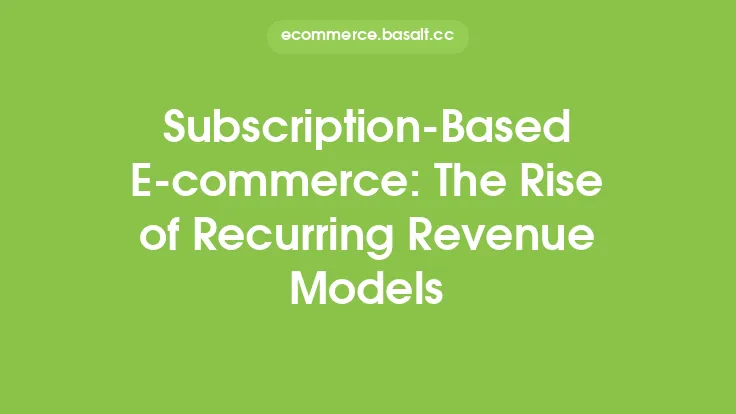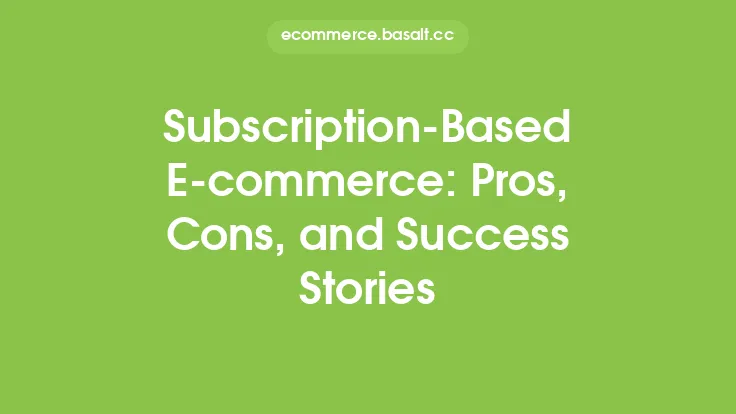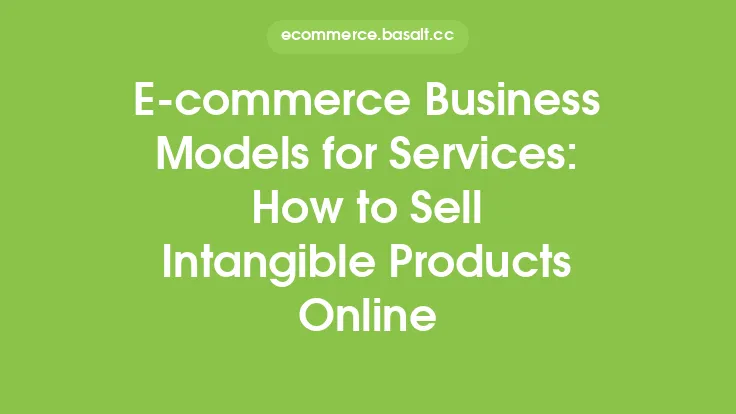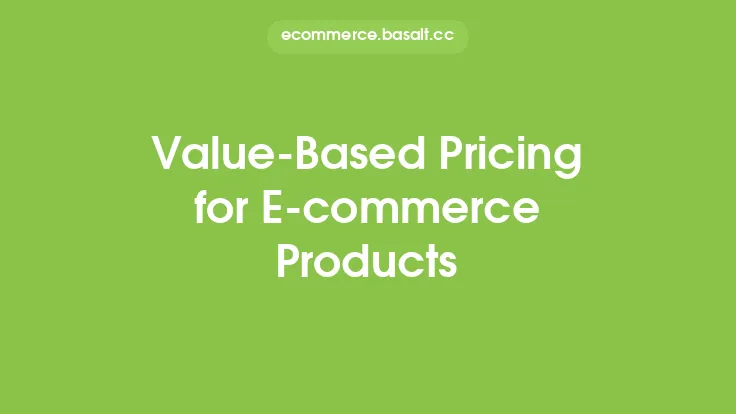In the e-commerce landscape, businesses are constantly seeking innovative pricing strategies to drive growth, increase customer loyalty, and generate recurring revenue. One approach that has gained significant traction in recent years is the subscription-based model. This pricing strategy involves offering customers access to products or services in exchange for a recurring fee, typically on a monthly or annual basis. By adopting a subscription-based model, businesses can create a steady stream of revenue, foster long-term customer relationships, and gain a competitive edge in the market.
Benefits of Subscription-Based Models
The benefits of subscription-based models are numerous. For businesses, they provide a predictable and stable source of revenue, allowing for better financial planning and forecasting. This recurring revenue stream also enables companies to invest in product development, marketing, and customer support, ultimately enhancing the overall customer experience. Additionally, subscription-based models encourage customer loyalty, as customers are more likely to continue their subscription rather than switch to a competitor. This loyalty can lead to positive word-of-mouth, online reviews, and referrals, further driving business growth.
Types of Subscription-Based Models
There are several types of subscription-based models that businesses can adopt, depending on their products or services and target market. The most common types include:
- Product subscriptions: These involve shipping physical products to customers on a regular basis, such as monthly delivery of groceries, cosmetics, or clothing.
- Service subscriptions: These provide access to intangible services, such as software, streaming platforms, or online courses.
- Hybrid subscriptions: These combine both physical products and intangible services, offering customers a comprehensive experience.
- Tiered subscriptions: These offer different levels of service or products at varying price points, allowing customers to choose the plan that best suits their needs.
Key Components of Successful Subscription-Based Models
To implement a successful subscription-based model, businesses must consider several key components. These include:
- Pricing strategy: The pricing of the subscription must be competitive and reflect the value that customers receive.
- Billing and payment processing: A seamless and secure billing and payment process is essential to minimize churn and ensure timely payments.
- Customer support: Providing excellent customer support is crucial to resolving issues, addressing concerns, and maintaining customer satisfaction.
- Content and product offerings: The products or services offered must be of high quality, relevant, and continually updated to keep customers engaged and interested.
- Analytics and feedback: Collecting data and feedback from customers helps businesses refine their subscription-based model, identify areas for improvement, and make informed decisions.
Challenges and Opportunities
While subscription-based models offer numerous benefits, they also present challenges and opportunities for growth. One of the primary challenges is acquiring and retaining customers, as the market becomes increasingly saturated with subscription-based services. To overcome this, businesses must focus on creating unique and personalized experiences, offering flexible pricing plans, and continually innovating their products or services. Additionally, businesses must be prepared to adapt to changing customer preferences, technological advancements, and shifting market trends.
Best Practices for Implementing Subscription-Based Models
To successfully implement a subscription-based model, businesses should follow several best practices. These include:
- Conducting thorough market research to understand customer needs and preferences
- Developing a clear and competitive pricing strategy
- Creating a user-friendly and secure billing and payment process
- Providing exceptional customer support and ongoing communication
- Continually monitoring and evaluating the effectiveness of the subscription-based model
- Being prepared to pivot or adjust the model as needed to respond to customer feedback and market changes
Conclusion
Subscription-based models have become a cornerstone of e-commerce pricing strategies, offering businesses a reliable source of recurring revenue and opportunities for growth. By understanding the benefits, types, and key components of subscription-based models, businesses can create a successful and sustainable pricing strategy that drives customer loyalty, retention, and ultimately, revenue. As the e-commerce landscape continues to evolve, it is essential for businesses to stay informed, adapt to changing market trends, and innovate their subscription-based models to remain competitive and achieve long-term success.





